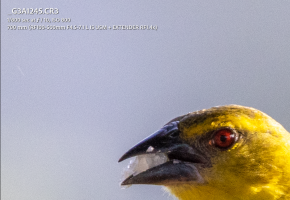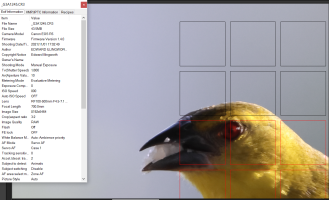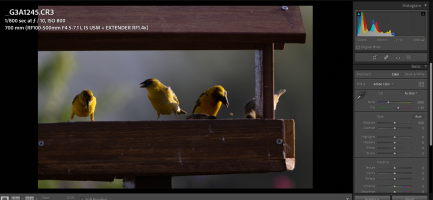My thoughts.
Your cropped image vs. your uncropped image shows a pretty major crop, so I'm not surprised by the noise, especially since the image was underexposed.
You can get similar noise reduction from Lightroom (Actually I use Camera Raw, but it's the same thing) as the DPP file, depending on how far to the right you move the noise reduction slider. How much noise reduction did you apply in Lightroom? In either case, you will sacrifice detail for noise reduction. It's a balancing act and you have to move the slider until you reach the balance of noise vs. loss of detail that you find acceptable. It looks like the DPP image just has a WHOLE lot more noise reduction applied.
Generally speaking, I've found that Canon's newest sensors (I use an R5 and a 1DX III) perform pretty spectacularly at higher ISOs. Indeed, when I'm in a hurry to process pictures from a sporting event I often forget to apply noise reduction in Camera Raw to files at 6,400 or below and don't get much noise even with default settings. But, then I am generally not making massive crops and most of my images get downsized to about 1140 px for the web and social media. I also take care not to underexpose.
There are a few things you can do to reduce apparent noise. Noise is often most visible in out of focus backgrounds and skies. With Lightroom or Camera Raw, use the new masking tool to select the subject and then invert that selection so that everything but the subject is selected. With that, you can apply some pretty radical noise reduction to the background without impacting your subject. In the example you are showing, all that noise in the sky can easily disappear with no harm done, since there is no detail there anyway (and you really wouldn't want detail there even if there were some.) Oftentimes, simply eliminating the noise in the background will give you acceptable results, because eyes will often tolerate more noise in the subject than in a blurred background.
Of course the best things to do are to not underexpose in the first place, avoid extreme crops and don't get caught up in pixel peeping at 100% when no one but you is going to see your image at 100%





